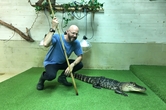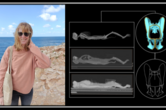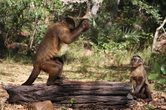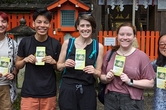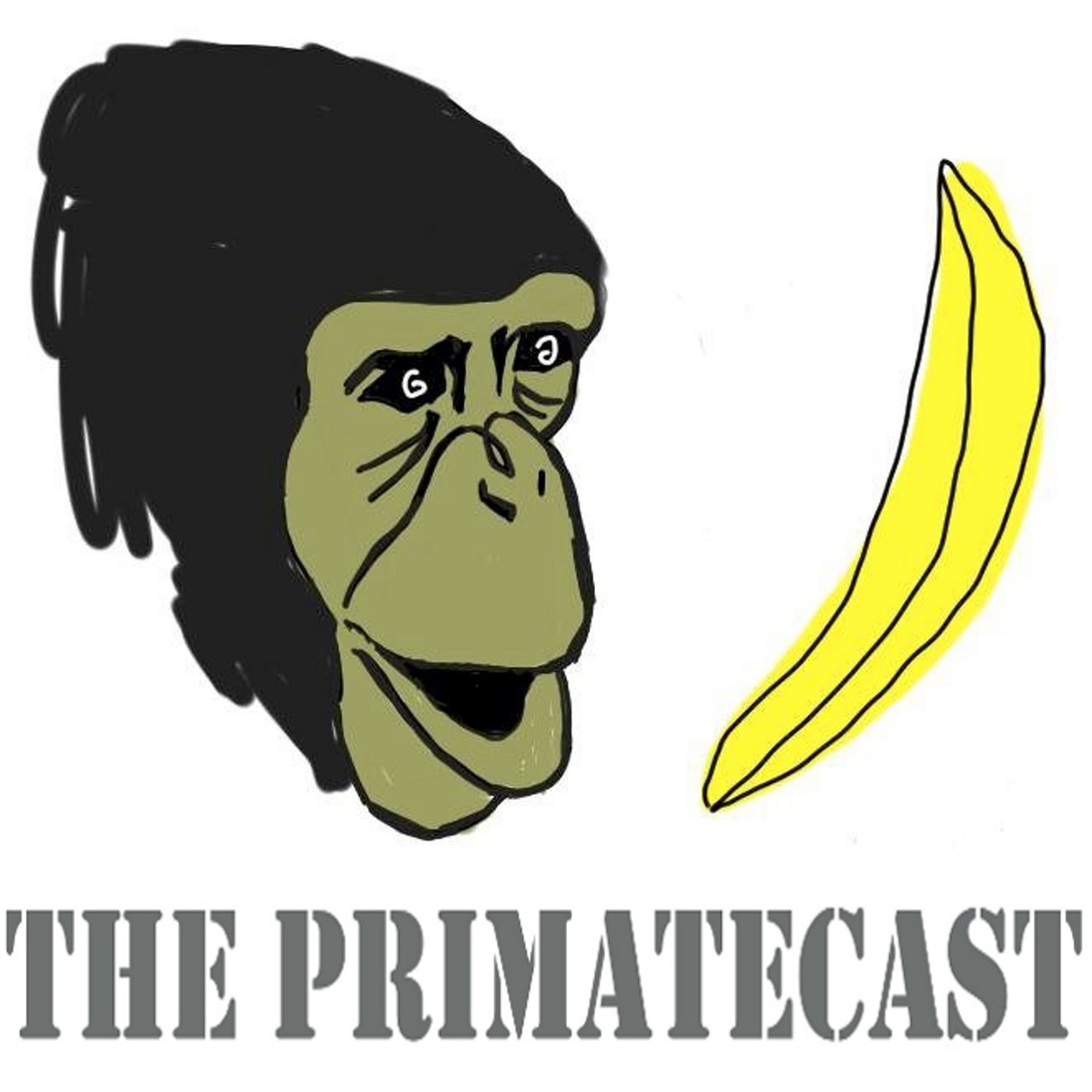Seeing Stress in Saliva

Monitoring stress levels of captive or protected animals is important for improving their well-being. How can we do it accurately and quickly enough to help identify causes of acute stress, in a way that doesn't itself cause extra stress to the animals? Nelson Broche, a doctoral candidate in the Social Systems Evolution section of PRI, and his collaborators offer a promising solution in a recently published paper. As it turns out, a key might be saliva, which tells us a lot about what an animal has been experiencing. We asked Nelson to tell us more about their latest findings and how their research has evolved.
How stressed is this Japanese macaque, and why? [Photo Credit: Nelson Broche]
CICASP: What led you to study stress in Japanese macaques?
Broche: My original interest in Japanese macaques was an opportunistic one, which began at a time when I was living in Japan a few years before becoming a graduate student. At that time, I became interested in the connection between humans and non-human primates. That led to a kind of hobby interest in observing this monkey in its natural habitat. I was often chased down mountain paths by prominent toothy males, but the more I was able to observe and learn, the more interesting they became.
Japanese macaques have been scientifically studied for over half a century and lots of information has been and continues to be produced. This species is also closely interconnected with human activities such as being in captivity for zoos and research facilities, provisioned at monkey parks for tourism, and naturally live near local human populations. There is still much more we can learn on how to responsibly manage our coexistence.
As for stress in particular, I want to work on topics that have the potential to bring practical real-world value. Stress is a concept everyone can relate to because if not carefully managed, it can have negative consequences for any primate species.
CICASP: You found that saliva samples, when carefully collected, can be used to detect spikes in the stress levels of macaques. Why was it important to devise this new method?
Broche: Common non-invasive sampling methods can detect stress by analyzing stress hormones in urine, feces, and hair. These sampling methods have proven useful in our understanding of stress in non-human primates. However, one of their main drawbacks is the substantial time lag from any given stress event. For example, of the three sampling methods just mentioned (i.e. urine, feces, and hair), urine represents the shortest time lag of a few hours from a stress event because what is being measured is an accumulation of stress hormones over several hours.
When observing complex social animals such as the Japanese macaque, one will quickly find that much can happen in a few minutes, much less a few hours. So then the question becomes, “What exactly caused that spike in stress?”. There is a need for monitoring stress within a short time frame in order to identify the source of stress specifically. In the sense that chronic stress is being caused by a specific repeated source, sampling via saliva may be able to help monitor stress within minutes versus hours by quickly and non-invasively identifying the source of stress.
Left: Japanese macaque chewing on a flavored rope swab that is used to collect saliva samples (Photo Credit: Nelson Broche); Right: Nelson's lab setup for analyzing macaque saliva samples (Photo Credit: Keiko Mouri)
CICASP: It sounds like you went through a lot of trial and error to devise a method for collecting saliva samples from the macaques. What was the biggest challenge?
Broche: There was a learning curve involved because it was my first time to work with captive individuals. Thankfully, staff at the Center for Human Evolution Modeling Research (Primate Research Institute, Kyoto University), kindly taught me about the care and management of the monkeys.
The process of figuring out what worked and making varying improvements was an engaging experience because there were tangible results seemingly each day. For example, a small change like using a food drier greatly improved the preparation time of the saliva collection device, or, each day spent with the monkeys gave me better perspective on their personality traits and how to cooperatively work with them.
Surprisingly, however, the biggest challenge was learning how to efficiently manage resources such as a limited research budget, meeting reasonable deadlines, and coordinating the many moving parts of the project. I think this experience gave me much better overall scope for planning future work.
CICASP: How do you think the findings of your study will help improve the well-being of captive macaques?
Broche: There are two foundational points that could be of use to the future of improving the well-being of captive Japanese macaques. First, as far as I’m aware, there are no published studies that have shown a method for the cooperative collection of saliva from unrestrained and awake Japanese macaques. Although the method can be improved, I included the progress data of their training to show that indeed this is possible in a relatively short period of time. It’s important to keep in mind that saliva is broadly useful because it provides a non-invasive source to study the many enzymes, metabolites, and other proteins it contains.
Second, stress is often measured by hormones from the activation of a physiological system known as the hypothalamic-pituitary-adrenal axis, or HPA axis for short. However, there is a second stress response system called the sympathetic-adrenal-medullary axis, or SAM axis for short, which is highly underrepresented in the study of stress in non-human primates. There are several types of stress and not all types are sufficiently measured by the HPA axis. So by expanding our ability to non-invasively measure a highly underrepresented stress response system (i.e. the SAM axis), this will allow us to study the stress response of Japanese macaques in greater detail.
CICASP: What's next for your research?
Broche: This work is currently being expanded in multiple areas. In the field, I’m applying non-invasive methods for collecting saliva that will allow us to measure stress within minutes from a semi-free-ranging group of Japanese macaques in southern Japan. At the Primate Research Institute, I’m working with researchers to better understand the relationship between environmental factors and stress within a captive setting—this is with the aim to help manage the health of captive populations. And in the lab, we are working on expanding our ability to measure several salivary biomarkers in order to simultaneously compare both of the previously mentioned stress systems (i.e. HPA and SAM axis). There is much work to be done but I look forward to what can be done in the next few years.
Nelson's field site and the birthplace of Japanese primatology, the island of Koshima (Miyazaki Prefecture, Japan [Photo Credit: Nelson Broche]).
